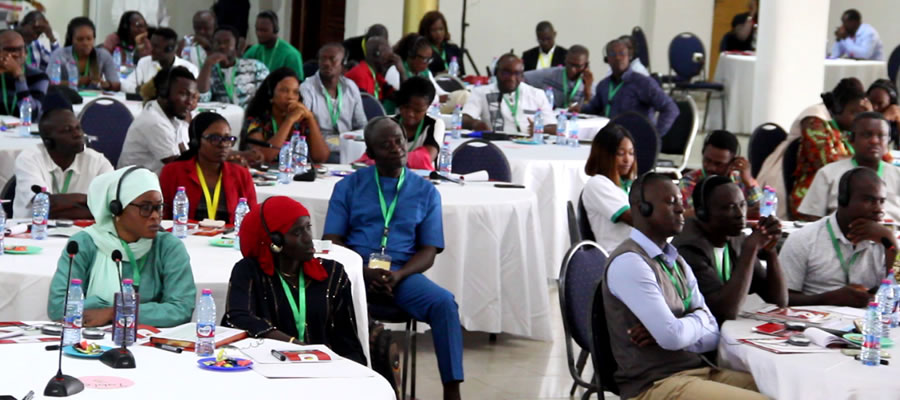

Introduction
Agriculture is a source of livelihood for some households in the municipality. This may be due to the rich soil and favorable climatic conditions in the District. The Municipality is characterized with moist semi-deciduous forest which is conducive for the production of a variety of cash and food crops and the rearing of farm animals. This chapter presents the households in agriculture, types of farming activities, types of livestock, and number and average number of animals per keepers in the Sunyani Municipality.[
Households in Agriculture
Figure 7.1 presents households in agricultural and non-agricultural activities by locality in Sunyani Municipal. Nearly two-thirds (65.7%) of households in the municipality are into non- agricultural activities. There are more agricultural households in rural areas than in urban areas. The reverse is the case for non-agricultural households where urban households not in agriculture are higher than rural households.
Types of Farming Activities
Table 7.1 presents households by agricultural activities and locality type in Sunyani Municipal. The Municipality has a total of 9,752 households in agriculture representing 34.3 percent of the total households in the municipality. Of this number, about 94 percent are into crop farming, 30.8 percent of are involved in livestock rearing and 0.3 percent into fish farming. 48
Most households in the municipality (93.7%) are involved in crop farming A Higher proportion of households in the rural areas (97.3%) are engaged in crop farming compared to the urban areas (91.9%). Again the proportion of households into livestock rearing in the rural areas (56.9 %) is higher than in urban areas (18.0%). On the other hand the proportion of households in urban areas into tree planting (3.4%) is higher than in rural areas (1.7%). There are some agricultural households in the Municipality who are engaged in multiple agricultural activities.
Distribution of Livestock Rearing
Table 7.2 shows the distribution of livestock, other animals and keepers. Within the Municipality, chicken rearing is the most common with the highest percentage of keepers (46.2%), followed by goat rearing (24.5%), sheep rearing (16.2%), pig rearing (4.7%), guinea fowl (1.9%), cattle rearing (1.7%) and Duck rearing (1.6%). Less than one percent each of keepers also rear the following: rabbit, grass cutter, dove, ostrich, turkey, beehives, and silk worm, fish farming and marine fishing.
Chicken rearing recorded 148,639 birds with an average of 66.8 per keeper. Goat rearing recorded 14,818 goats with an average of 12.5 goats per a keeper. A total of 12,948 sheep were recorded with an average of 16.6 per a keeper. Pig farming recorded 3,875 pigs with an average of 17.1 pigs per keeper. The table further shows 2,444 cattle were recorded with an average of 30.6 per keeper. 1144 guinea fowls were recorded with an average of 12.3 per keeper. Also 2,724 turkeys were recorded with an average of 64.9 birds per keeper.
Date Created : 11/20/2017 3:33:27 AM












 facebook
facebook
 twitter
twitter
 Youtube
Youtube
 +233 593 831 280
+233 593 831 280 0800 430 430
0800 430 430 GPS: GE-231-4383
GPS: GE-231-4383 info@ghanadistricts.com
info@ghanadistricts.com Box GP1044, Accra, Ghana
Box GP1044, Accra, Ghana